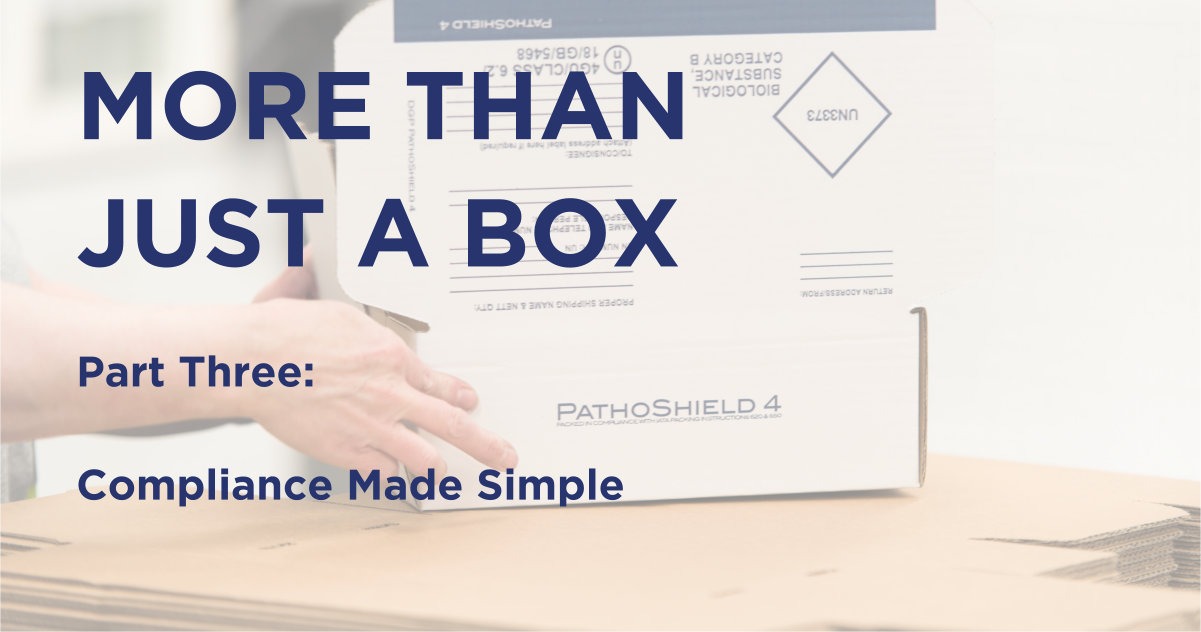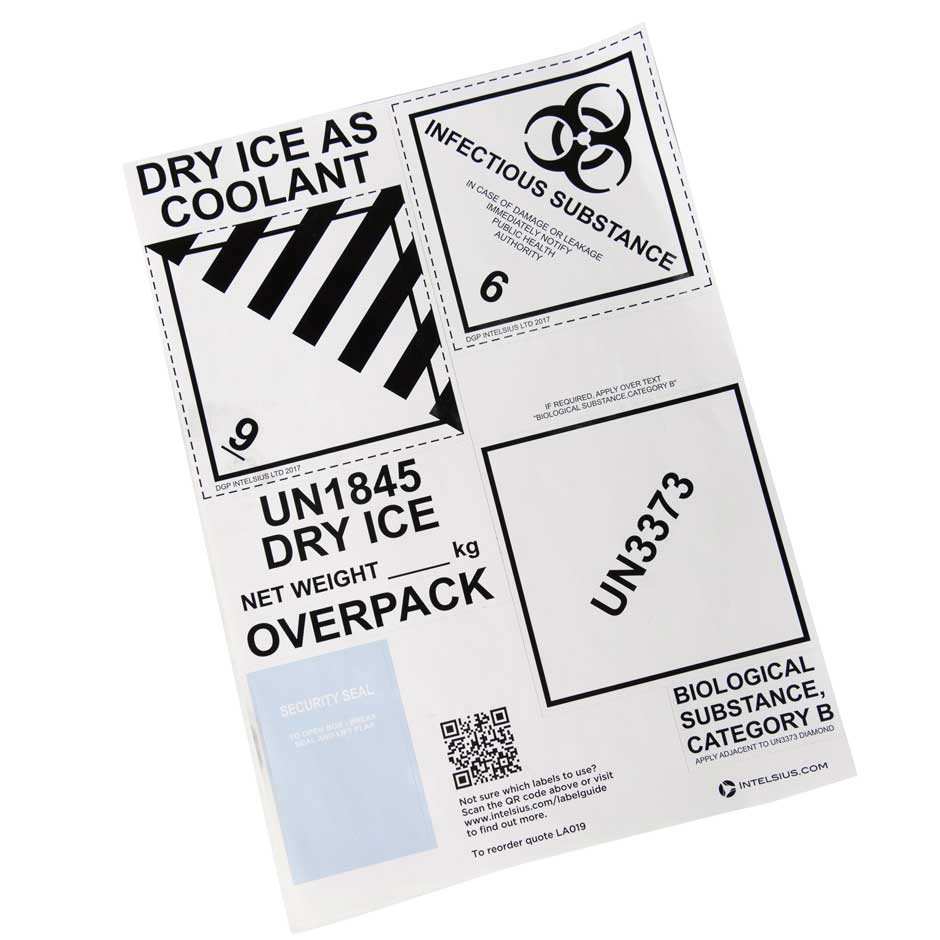Continuing the “More than just a box” series, this article looks at the steps Intelsius take to make sure packaging solutions used within various sectors comply with a varying and evolving set of transport regulations.
Transportation of Infectious Samples
Intelsius can provide a range of products designed for infectious samples’ safe and compliant transportation. The first question is what classification the infectious sample being transported falls into.
The IATA Dangerous good regulations (IATA DGR’s) classify infectious into Category A Infectious Substances or Biological Substance Category B substances.
Category A substances are defined as “An infectious substance which is in a form that, when exposure to it occurs, is capable of causing permanent disability, life-threatening or fatal disease in otherwise healthy humans or animals.”
These Category A substances are then further assigned to a specific UN number of either UN2814, for infectious substances meeting the criteria defined above and affecting both humans and animals, or UN2900, for infectious substances meeting the criteria defined above and acting animals only.
Category B substances are defined in IATA DGR’s as “An infectious substance which does not meet the criteria for inclusion in Category A. Infectious substances in Category B must be assigned to UN3373.
Intelsius PathoPak and PathoShield brands include subsections of products designed for the compliant transportation of Category A and Category B UN3373 substances. The packaging must undergo significant testing, including pressure and drop tests. The solutions are also supplied with pre-printed UN markings, high absorbency materials, and 95kPA secondary containers to adhere to further transport regulations.
For more information about transporting infectious samples and for details on which packaging solution is the best suited to transport your payload, please contact a member of the Intelsius customer services team.
Alternatively, consult the latest IATA regulations to learn more about the transportation and classification of infectious samples and specimens.
Compliance labeling
Labeling shipments correctly is pivotal in compliance when transporting temperature-controlled or infectious specimens. The correct labeling will also maintain the safety of those transporting the shipment and guide when deciding on the correct delivery methods for a packaging solution.
Intelsius offer a helpful label sheet containing a variety of compliance labels, including:
- security seals
- class 9 labels, to be used when shipping using dry ice as a coolant
- class 6.2 infectious labels set, to be used when transporting Category B UN3373 or Category A UN2814 or UN2900 infectious samples
For more information on how to apply and when to use these labels, please see the Intelsius Label compliance guide.
Or for further information on transporting payloads complaints, please email compliance@intelsius.com, and a member of the Intelsius team will be in touch shortly.
Please be aware that transport regulation and compliance labeling varies depending on many factors, including geographical location, transport, and sample type. This blog is designed to provide a basic understanding of compliance only. DGP Intelsius is not liable for the refusal/delay of any shipment for incorrectly labeling systems when using this blog. It is the responsibility of the consignor/sender to ensure that all packaging
is prepared and labeled correctly to achieve compliance. Please contact your Dangerous Goods Safety Advisor (DGSA) if you require further advice.
Sources
IATA, 2017, https://www.iata.org/whatwedo/cargo/dgr/Documents/infectious-substance-classification-DGR56-en.pdf

